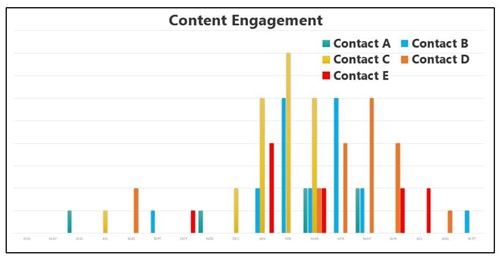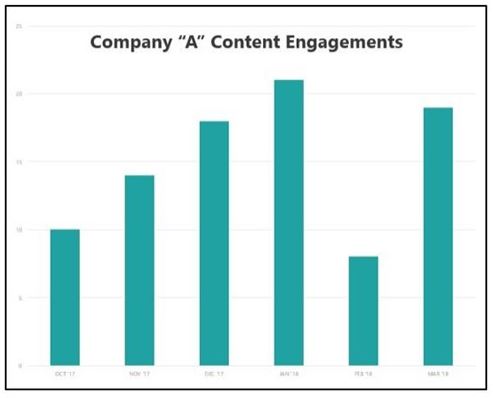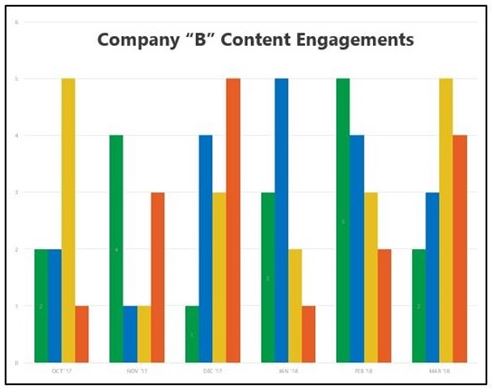Leads Aren't Buyers: Tracking Companywide Engagement In B2B Marketing

Many B2B marketers are obsessed with leads. The problem is, sales teams can’t sell to a lead in long, complex B2B sales cycles. Instead, they have to sell to multiple personas within large buying groups.
Yet marketers obsess over tracking lead activity, which is relatively easy to measure. A lead can click an email or a banner ad, download a white paper, or visit your booth at a trade show. A lead can be nurtured and automated and scored.
Marketers need to remember that a lead doesn’t have the power to do much of anything, no matter how high up the food chain that lead is. That’s because there are an average of 6.8 “leads” involved in a customer buying group in a typical B2B purchase. Research from CEB/Gartner shows this number will only continue to grow.
It’s time to stop obsessing over individual leads and start looking at the entire picture of a company’s buyer’s journey. Yes, this is difficult. But it’s absolutely imperative in today’s B2B sales environment.
Individual Leads Can’t Show A Buyer’s Journey
Let’s get to the data. Here’s an example of what a “lead” looks like.
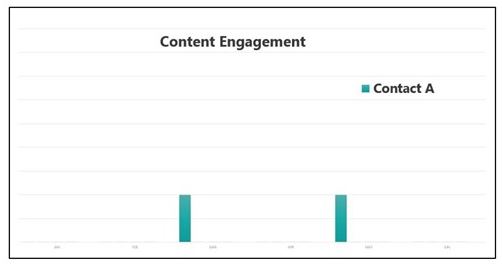
This is a real-life example from a supplier in the life sciences market. This “lead” downloaded two pieces of content within a six-month window. In this case, the lead was a director of clinical research at a $2 billion pharmaceutical company that was right in the sweet spot for the supplier.
Two content engagements in six months aren’t very exciting, right? That marketing team wouldn’t have enthusiastically passed this to sales with “URGENT” in the subject line and one of those red exclamation points to signal it was of “high importance.”
But consider how that lead fits in this view of engagement, this time showing activity from a group of leads at that same $2 billion pharmaceutical company.
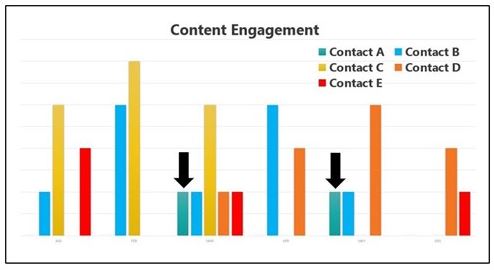
Now how does that director of clinical research with two downloads in six months look? Like he or she is part of a purchasing group with an active buyer’s journey, that’s how. Even though that presumably not-so-engaged lead is showing less activity than those other four colleagues depicted here, it’s likely a safe bet that sales should engage that lead and determine the fit within the buyer’s journey.
Once you start tracking companywide engagement, you can zoom out even further. Now, look at data for these same five contacts over an 18-month period instead of just a six-month period. These spikes in activity might signal the start of a buyer’s journey.
Remember, as I said in a previous post that gives an overview of behavioral analytics, “B2B buyers are humans, and as such are creatures of habit who attend the same trade shows, read the same sources of information, and do so with the same frequency. It’s likely a sign that something is changing when prospect engagement starts to spike across multiple individuals in the decision-making process.”
Your buyers aren’t going to give away insight by going to your website, downloading a case study, and sending an email to a sales rep with precise details about their project, budget, and buying group dynamics. But they do have a digital body language that can illuminate the buyer’s journey when you consider companywide engagement rather than a single contact’s lead activity.
Companywide Data Differentiates Interest And Intent
“But our marketing processes aren’t set up to do anything other than discover leads and nurture them until they’re ready to be passed on to sales,” you say. That’s understandable – many B2B marketing teams obsess about leads, leads, and more leads, and they have very expensive marketing software platforms to facilitate this obsession.
If marketers are too transfixed by individual leads, they run the risk of sending the wrong opportunities to their sales teams. For example, an individual lead can look like an ideal opportunity.
This lead, a CEO of an emerging biotech company (company “A”), was highly engaged with 90 content engagements within a six-month window. From a lead-scoring standpoint, it looks like a no-brainer for sales. But this lead is showing interest, not purchase intent. The difference may seem subtle, but intent leads to fruitful sales opportunities while interest leads to frustrated sales reps.
A lead might be interested and therefore highly engaged for a number of reasons. Maybe a lead is new to the industry and is interested to learn more. Maybe that lead is interested in raising a round of capital and is doing market research to prepare to pitch investors. Or maybe your marketing team writes really interesting article titles and email subject lines that bait that lead into a lot of clicks. Even though this lead from company “A” had 90 engagements in a six-month window, this likely isn’t a sales winnable lead.
When a group of leads from the same company all start to demonstrate interest, that might be a better indicator of intent.
Company “B” is also an emerging biotech, one with a very similar profile to company “A.” In that same six-month period, four contacts from company “B” had 71 total content engagements. That’s likely a better signal of a purchasing committee with intent to buy.
But if each of those four contacts at company “B” were evaluated as individual leads, they wouldn’t show enough engagement to be passed along to sales. Company “A” averages 15 engagements per lead per month, while company “B” averages just shy of 3 engagements per lead per month. See the problem?
Necessary Complexity In B2B Marketing
Jon Miller, co-founder and former CMO at Marketo explains, “Lead-only systems struggle to make sense of where the broader account is in the buying journey, which makes it hard to deliver the right experience for each persona and buying stage.” He explains how lead-focused marketing processes create “unnecessary complexity.”
It is complex to track companywide data, but that is now a necessary complexity for B2B marketers. Marketers can continue measuring lead clicks, impressions, and open rates like their systems are set up to do. But those measurements will only show individual lead activity. Sales teams won’t get very far with individual leads unless they understand how those leads fit into the bigger picture of the buying group’s active buyer’s journey.
Originally published on Follow Your Buyer on 9/22/20
Let's work together.
Whether you're ready to hit the ground running or just starting and have questions, we're here to understand your goals and explore how we can help you.
